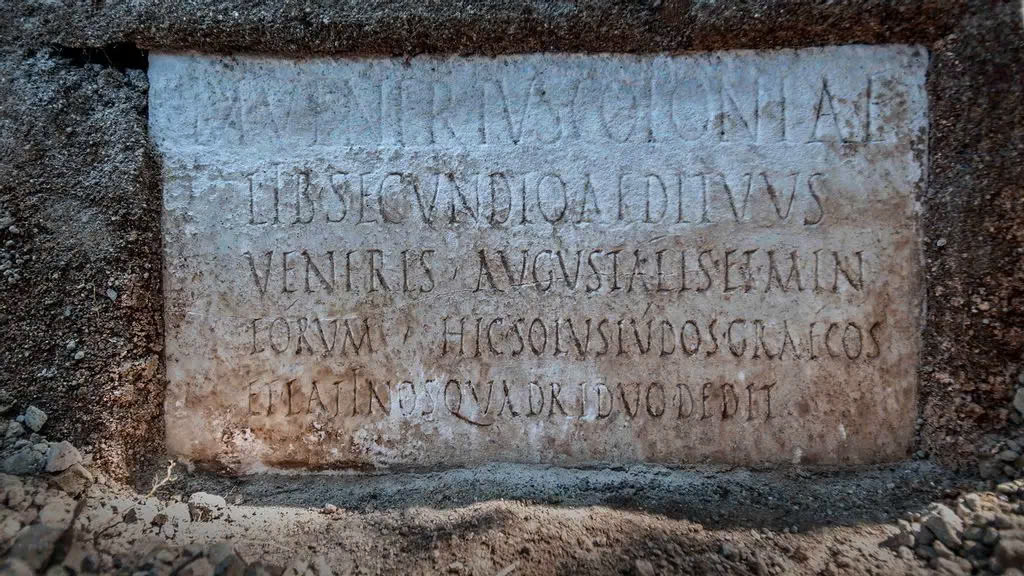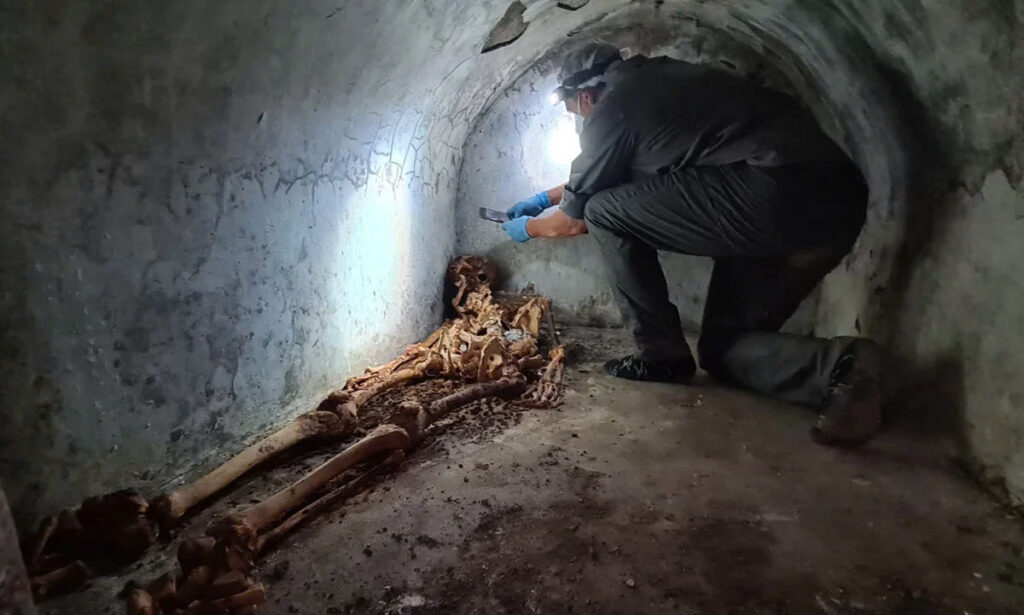A Remarkable Find in the Ancient City

In a groundbreaking discovery, archaeologists have unearthed a 2,000-year-old human skeleton in Pompeii, the ancient Roman city in southern Italy. This exceptional find has captivated researchers due to its remarkable state of preservation, including intact white hair and part of an ear – a result of partial mummification.
The Man Behind the Bones

The skeleton is believed to belong to Marcus Venerius Secundio, a former slave who rose to prominence in Pompeian society. Dying at the age of 60, Marcus had achieved considerable wealth and status, as evidenced by the grandeur of his tomb and the inscription on his tombstone.
A Cultural Revelation

Perhaps the most intriguing aspect of this discovery is the insight it provides into Pompeii’s cultural life. The tombstone inscription reveals that Marcus organized performances in Greek, a surprising detail that sheds new light on the city’s vibrant and diverse cultural atmosphere.
The Preservation Puzzle
Unraveling the Mummification Mystery

Researchers are now investigating the reasons behind the exceptional preservation of Marcus’s remains. Professor Llorenc Alapont from the University of Valencia suggests that intentional mummification might have played a role, though further analysis of the tomb’s fabrics is needed to confirm this theory.
Pompeii: A City Frozen in Time
The Catastrophic Eruption

The discovery of Marcus’s tomb predates the catastrophic eruption of Mount Vesuvius in 79 AD, which famously buried Pompeii under ash and debris. This eruption, vividly described by the Roman poet Pliny the Younger, created a pyroclastic cloud that engulfed the city at speeds of up to 700 km/h and temperatures reaching 1,000 degrees Celsius.
A Window into the Past

Since excavations began in the mid-19th century, Pompeii has yielded approximately 1,000 bodies, many preserved as plaster casts in their final moments. The discovery of Marcus Venerius Secundio’s tomb adds another fascinating chapter to the ongoing story of this ancient city, providing invaluable insights into Roman life and death practices.

This remarkable find not only enriches our understanding of Pompeii’s social and cultural landscape but also highlights the city’s enduring ability to surprise and educate us about the ancient world.

